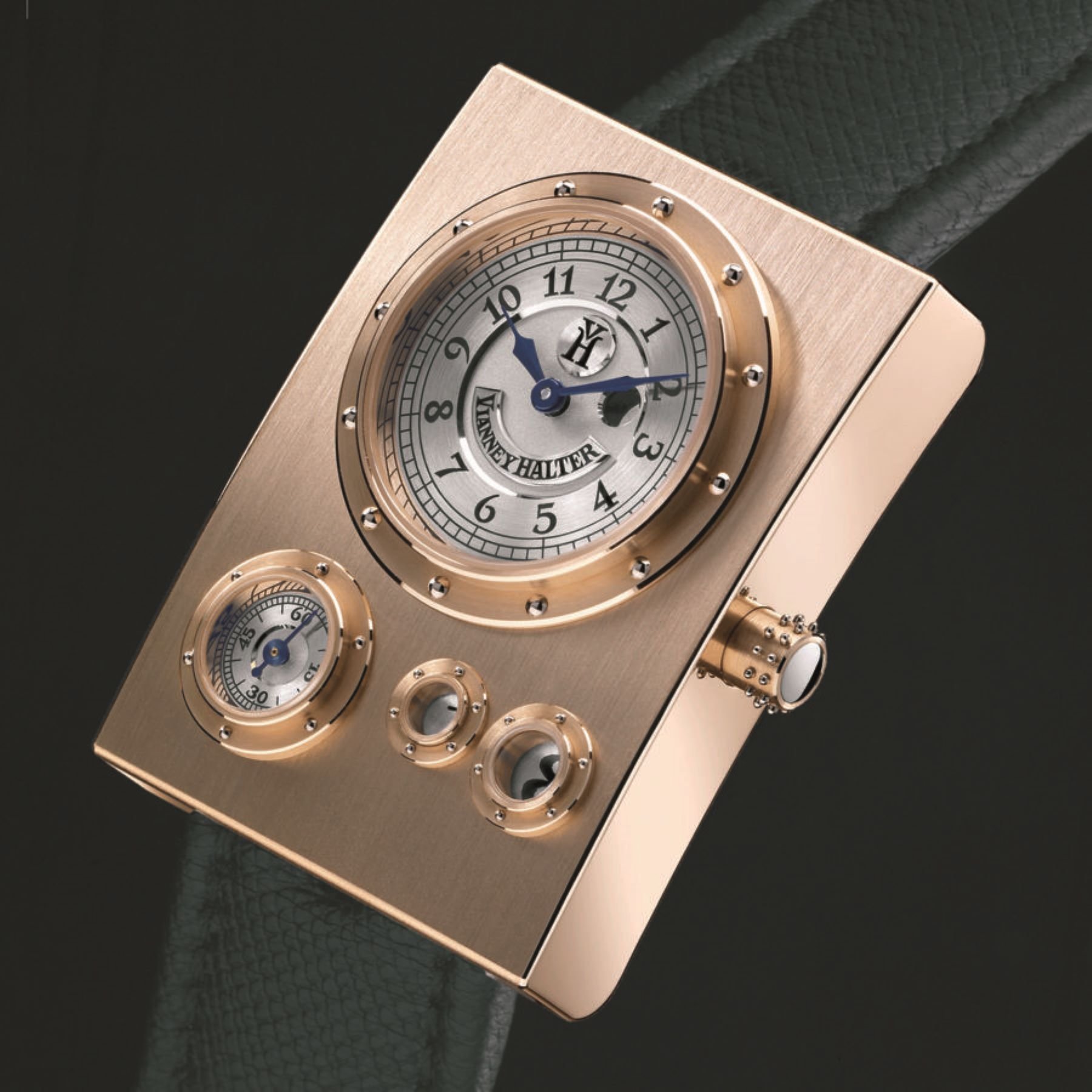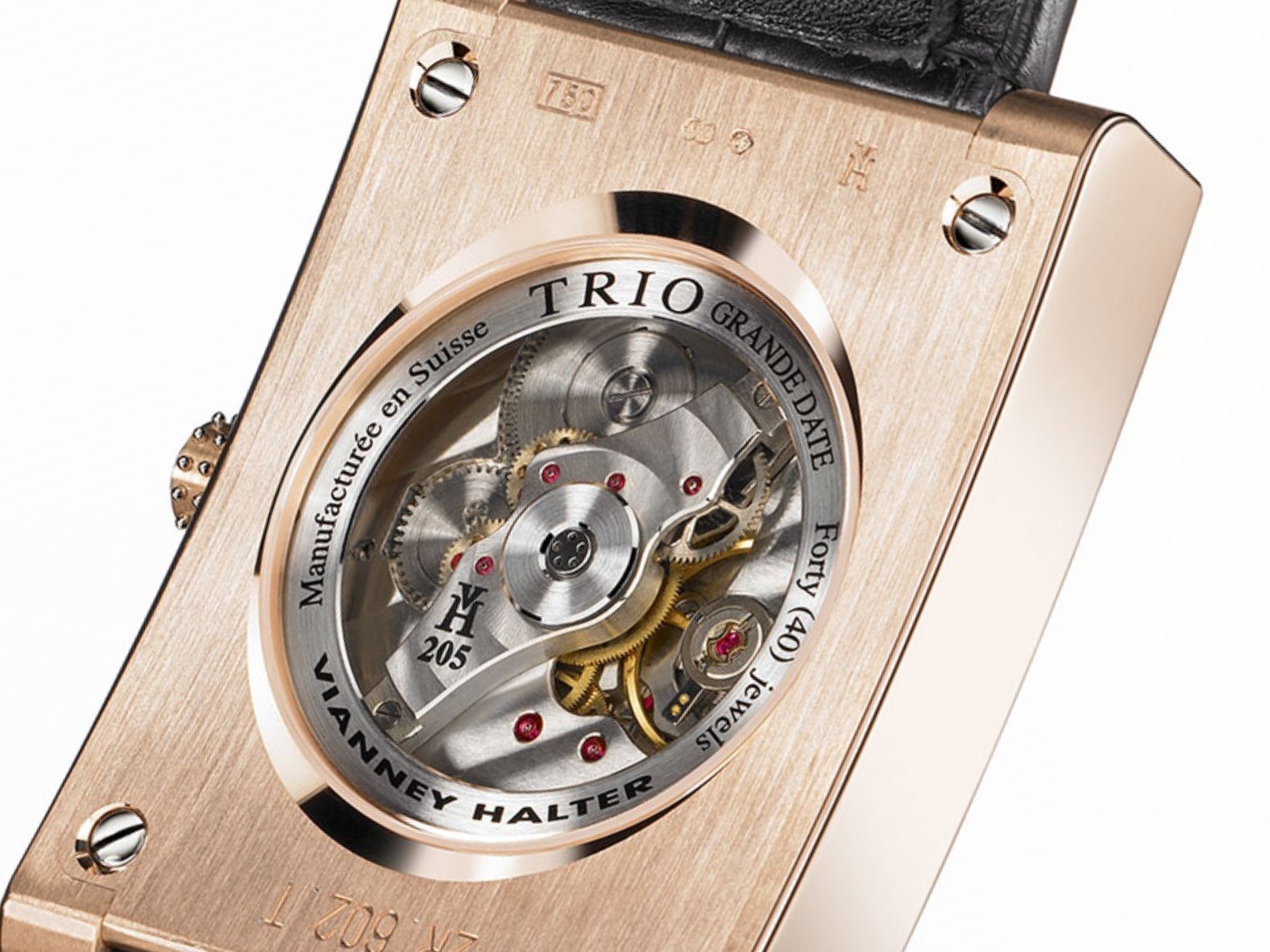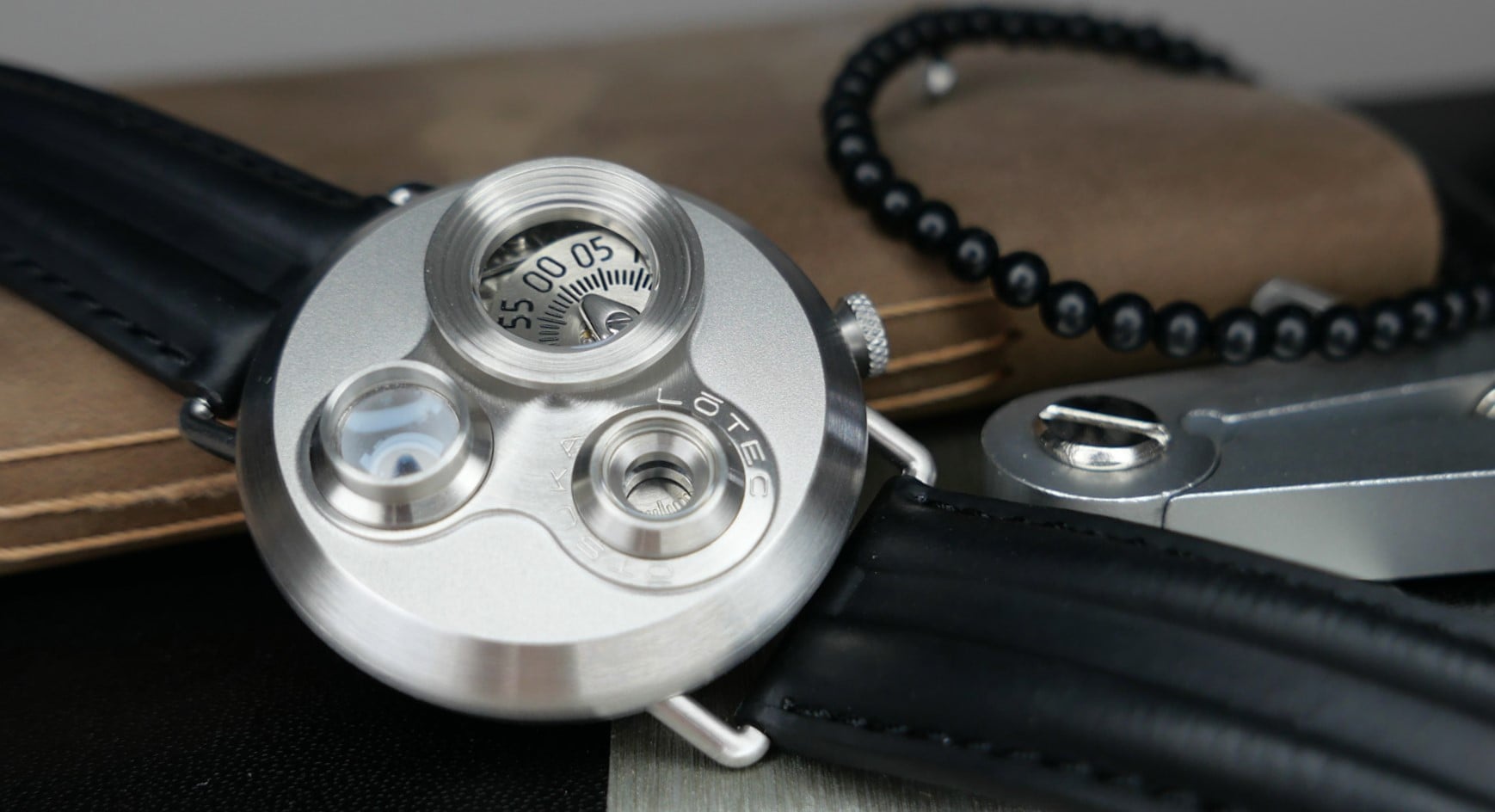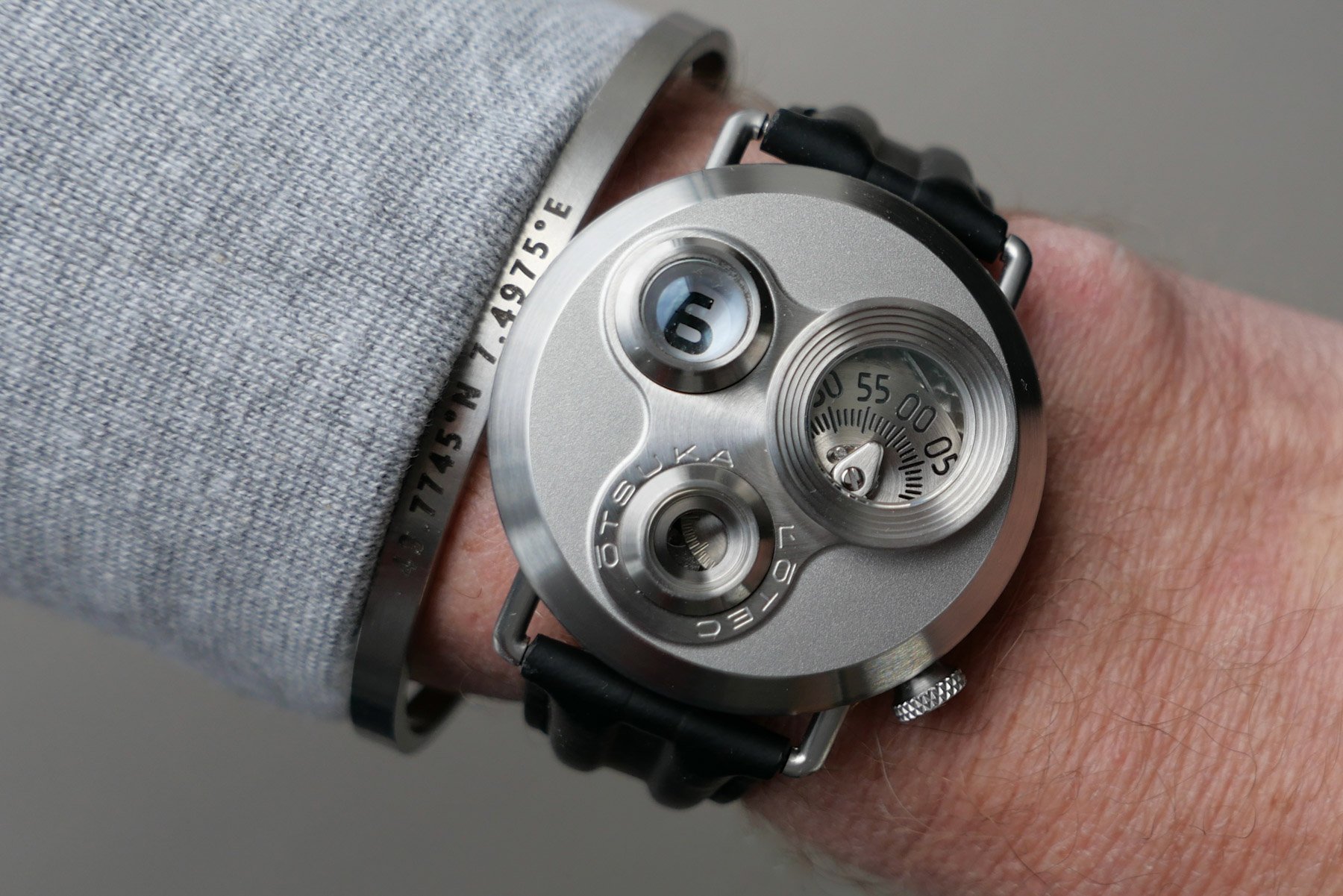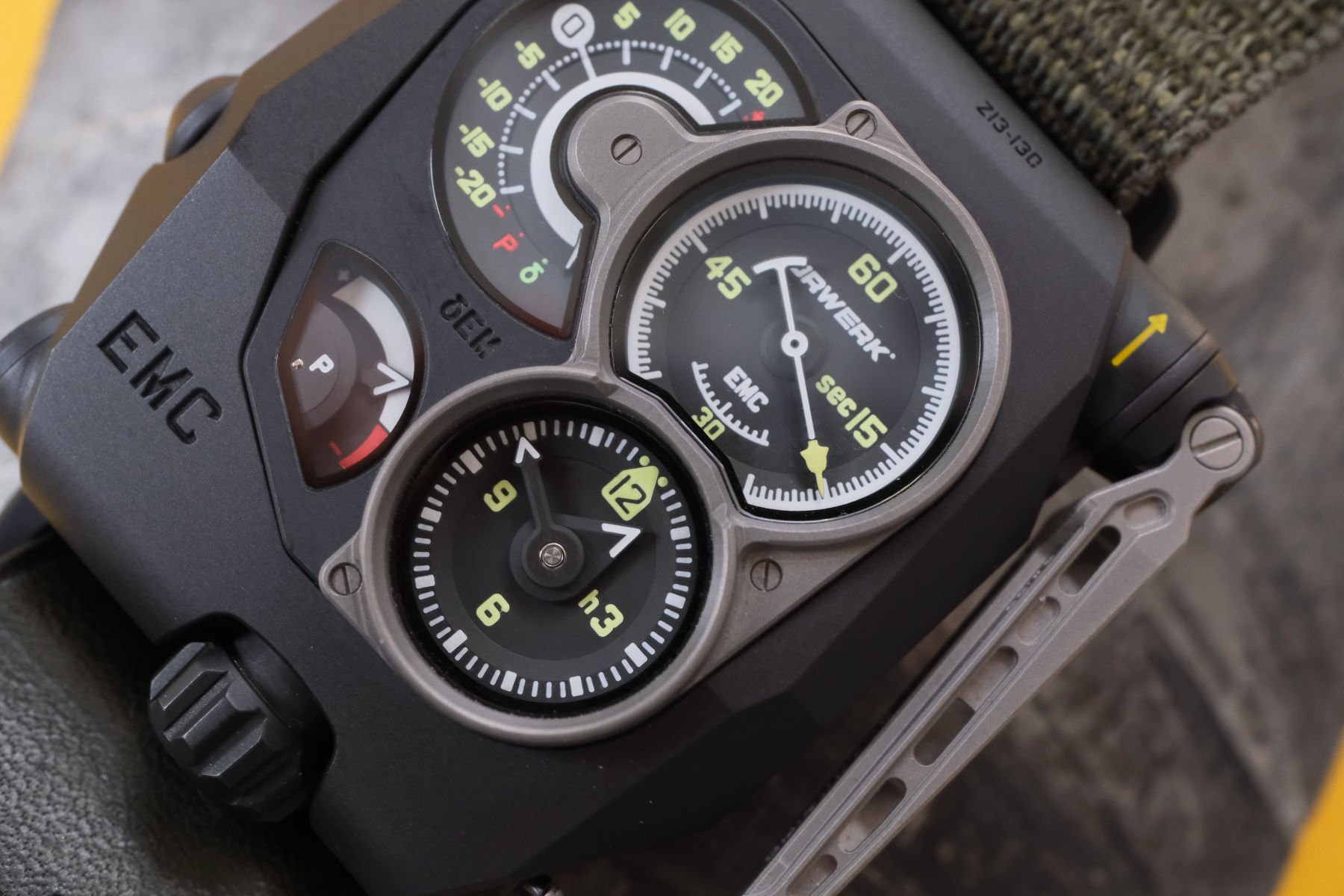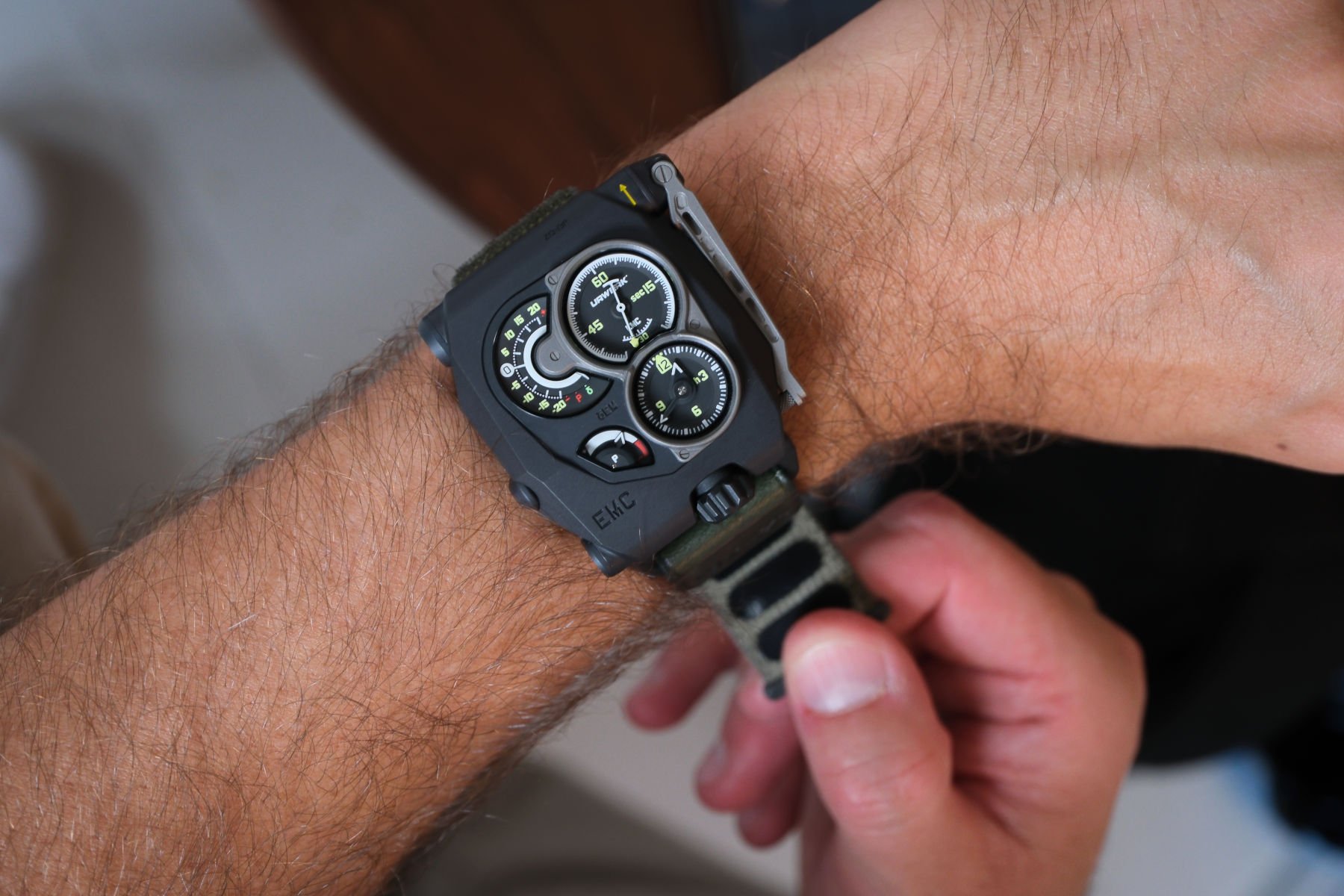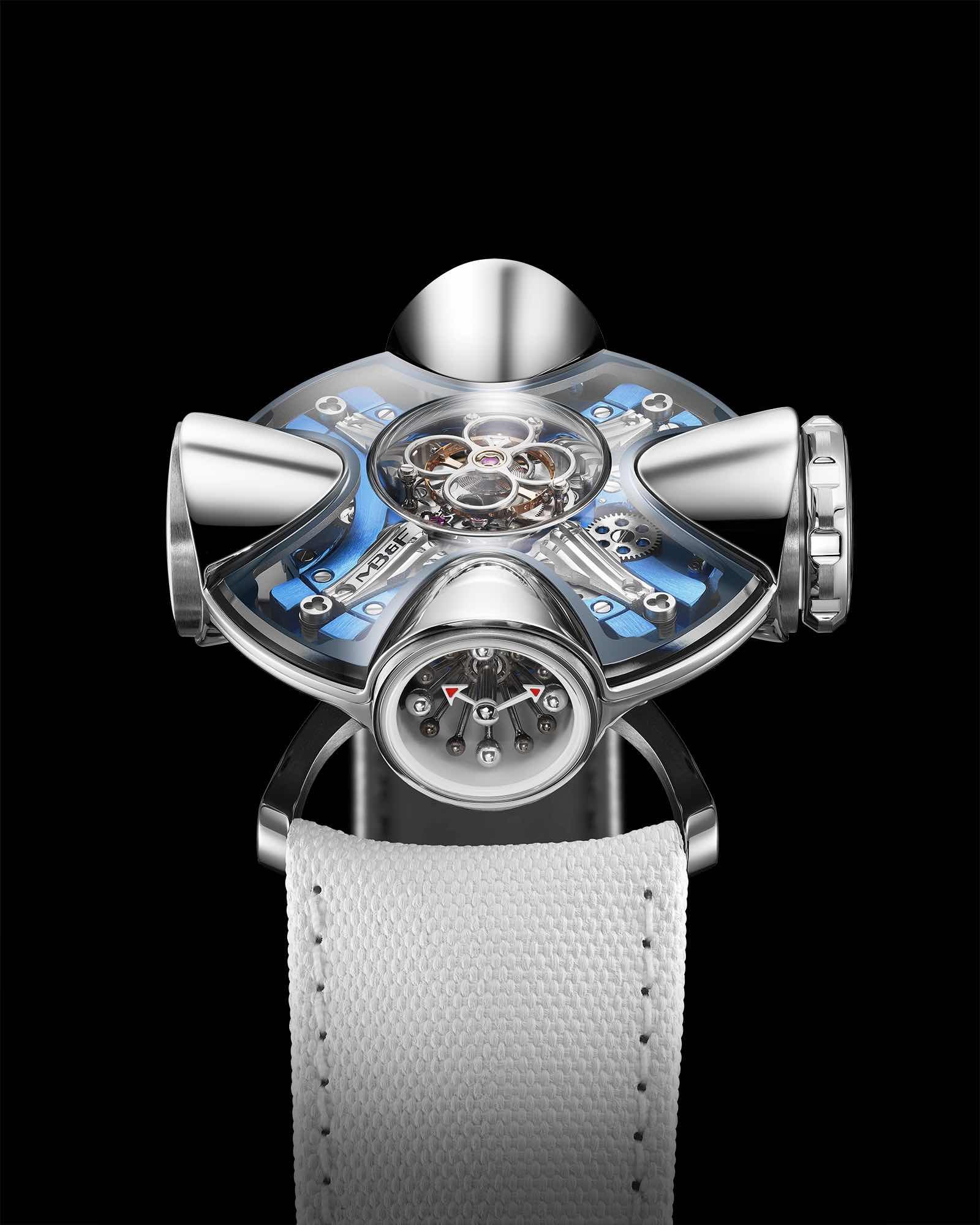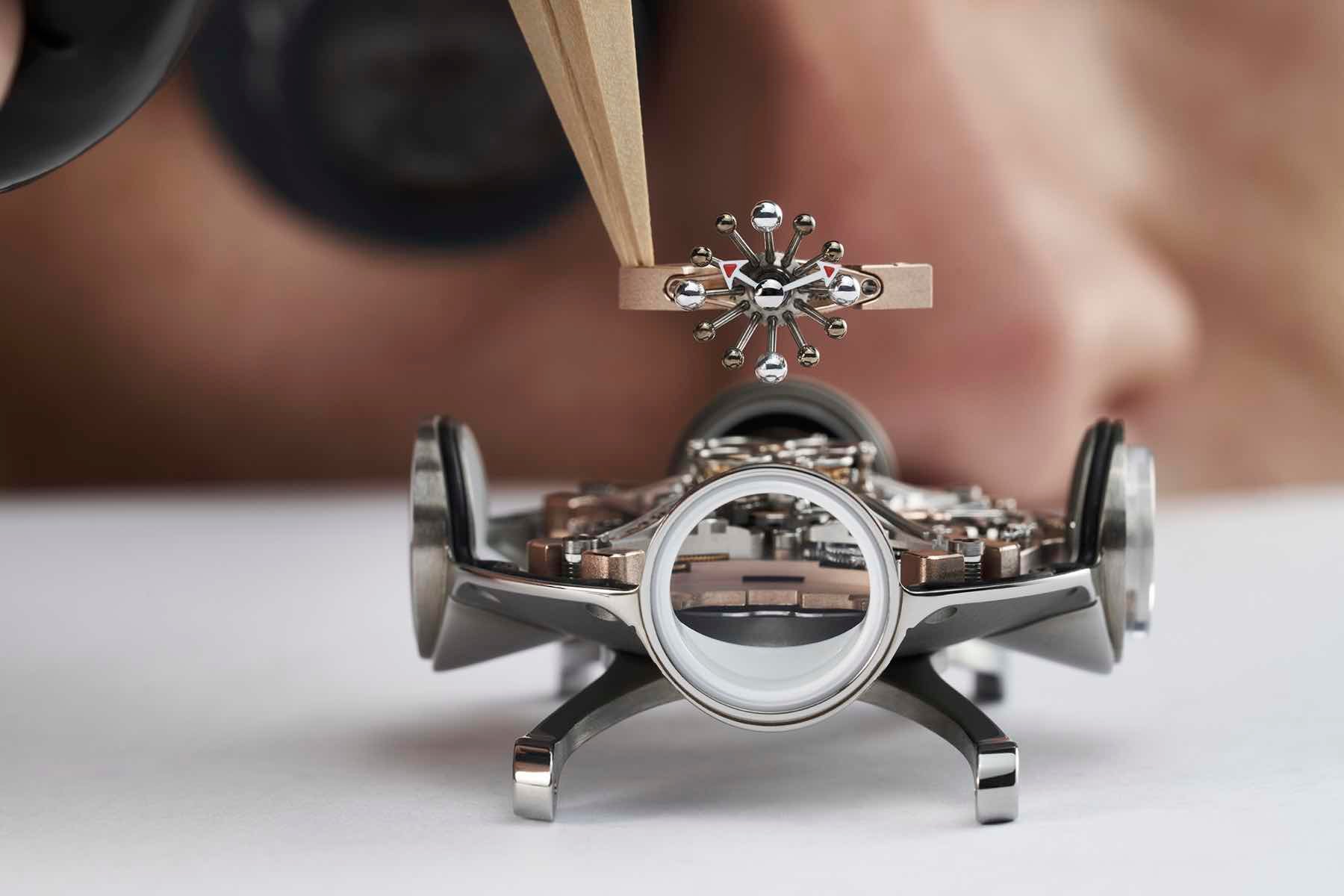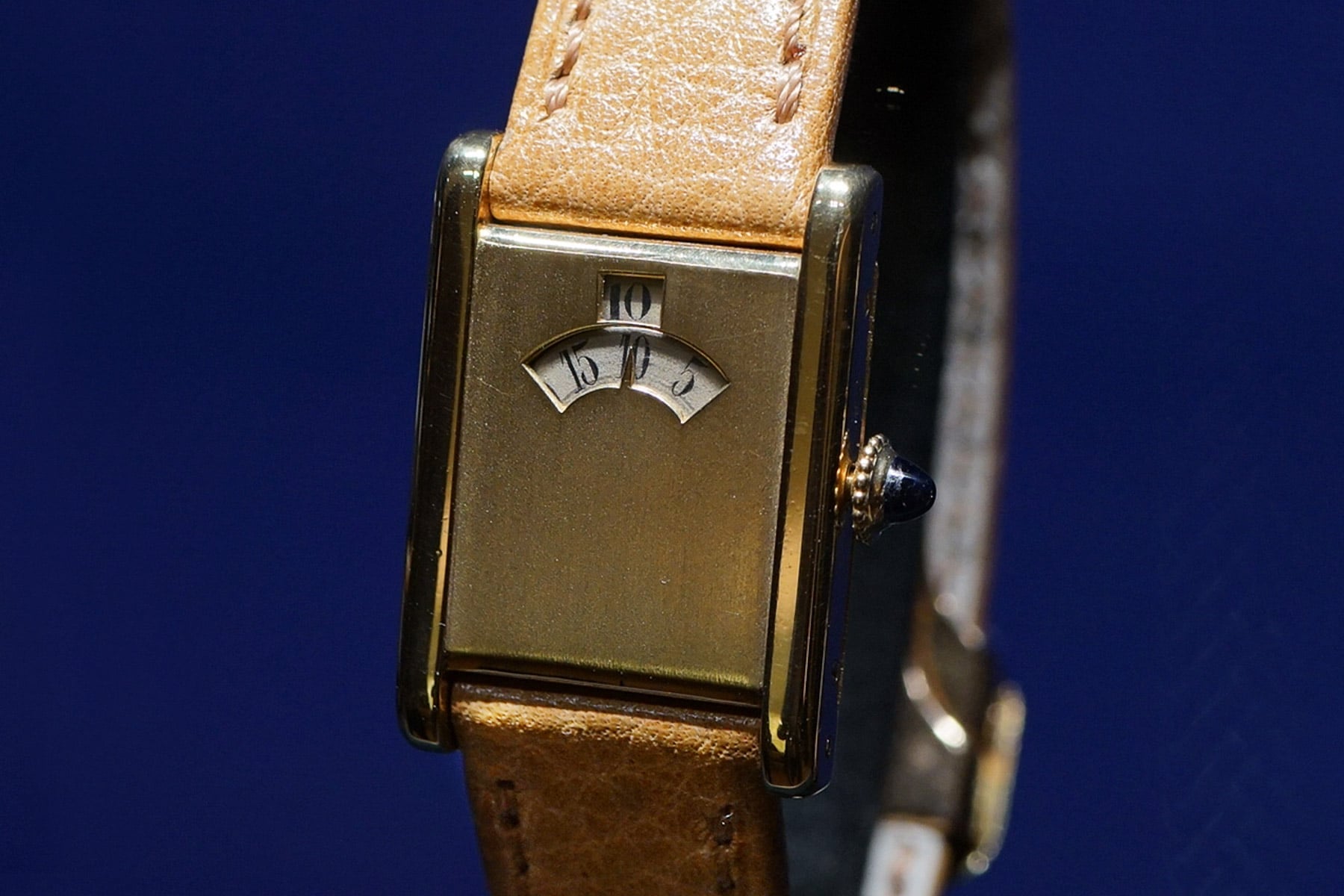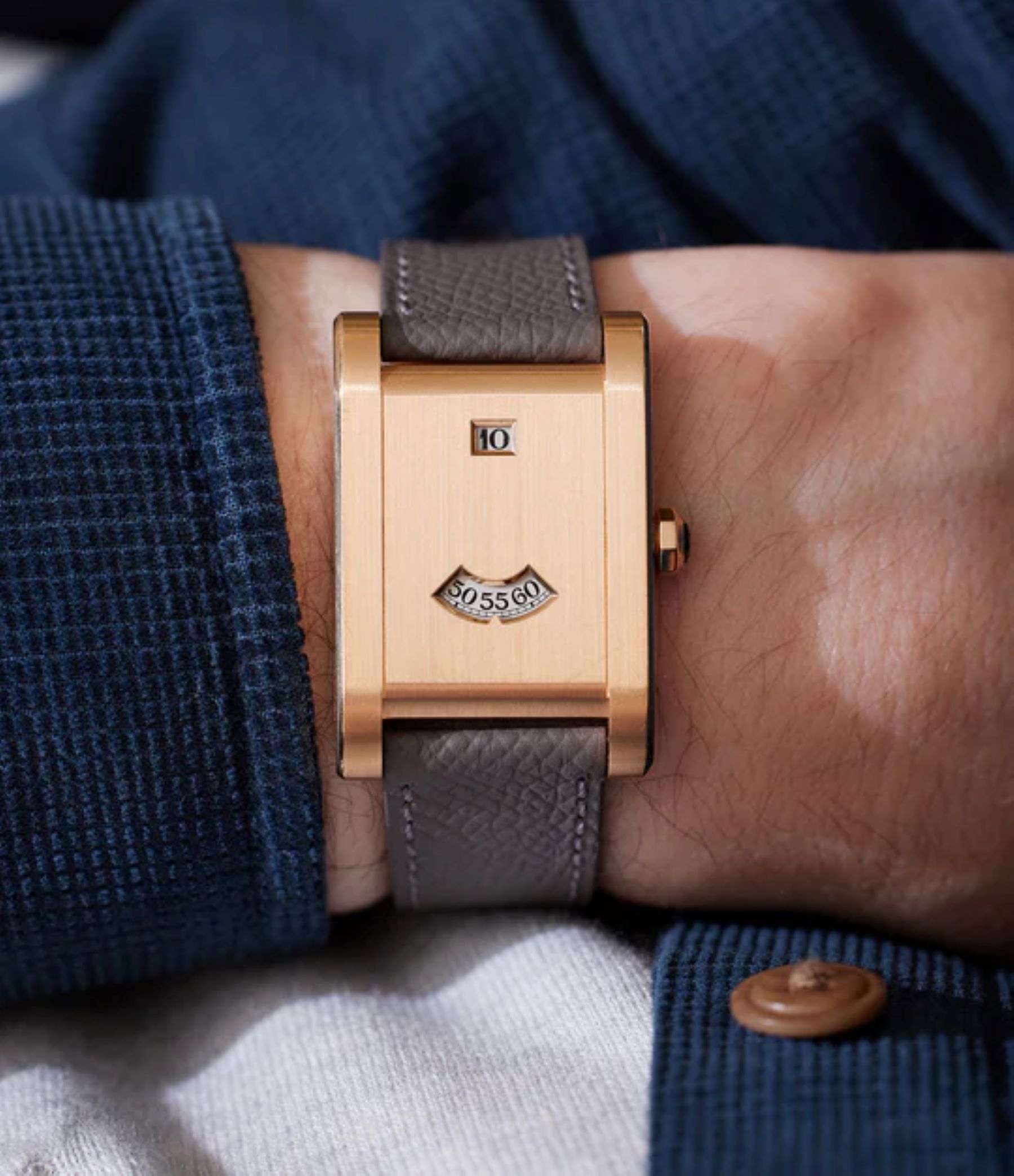Multiple Displays: Are They The Coolest Thing Since Tourbillons? — Examples From MB&F, Vianney Halter, Cartier, And More
Even if I do favor the cool expressions of indie brands, the majority of my watches are traditional. But my €2K Otsuka Lotec got the strongest reaction I’ve ever seen at Geneva Watch Days this year. As usual, I was trying to wear an inoffensive but interesting watch. I didn’t want it to clash with brands’ novelties, but its multiple displays captured much attention.
In fact, it worked too well. Quite a few meetings ended with the tables turned as execs or PR people wanted me to tell them about the oddball 40mm charmer. And with €100K all-singing, all-dancing novelties on the table, that says a lot about the value in offbeat charm.
Vianney Halter Trio
Making watch designs as different as this is bold in a challenging year for the industry. But offbeat designs are in Vianney Halter’s blood, permeating the brand’s collection. Unlike most of this genre’s tech focus, traditional craftsmanship is a key factor. For a considerable outlay not mentioned on the brand’s website, the solid rose gold Trio with its avant-garde charm is still a part of the collection and has been for some years now. It has a 32 × 44 × 12mm case that curves gently on the wrist. But with a total weight of 135 grams, 90 of which are pure gold, this ain’t no lightweight.
Boasting a distinct and traditional finish, it has an air of retro-futurism. The Trio could be pulled straight out from the illustrations of an early 1900s science fiction novel and feels rather grand. No fewer than four brushed and polished portholes adorn the face of this gold nugget, affixed with polished micro-bolts. The case is brushed and has slim polished bevels, and you’ll find a delicately brushed and grained dial on the top half. Below, you’ll see a small seconds aperture and a cheeky variant of a Grand Date visible through two separate windows. The movement is rectangular with a sapphire rotor, allowing an unhindered view of the in-house VH205 caliber with its 60 hours of power reserve. The price is POA, but you can learn more about the watch on Vianney Halter’s site.
Otsuka Lotec No.7.5
The Otsuka Lotec No.7.5 is my easy top choice for this story on watches with multiple displays. It has a retail price of around €2,000 but is difficult to source outside of Japan, so I am lucky to own one. The multiple displays are inspired by vintage film cameras and prove how imaginative a watch can look when designed by a non-watch designer. Jiro Katayama is the brand owner and a self-taught watchmaker with a design background. I had the opportunity to acquire one of the No.7.5 models right around the start of this year and happily spent around €2,000 for what turned out to be a lot more than a novel piece of wristwear. It has oodles of industrial charm with its all-steel construction but a distinctly Japanese sense of detail. Katayama-san’s approach has earned the latest No.6 a GPHG nomination this year and a recent Bonhams hammer price of more than €11K for an early model.
The No.7.5’s 40mm case wears like nothing else but compact. Even if you include the lugs, the Otsuka Lotec is defiantly circular. It has a brushed circumference and a grained, blasted top with a machined-out base for the camera-inspired apertures. Sapphire crystals are set into three distinct takes on jumping hour, scrolling minute, and seconds displays. Small wire lugs enhance the otherness of the No.7.5, adding an almost vintage touch. But it somehow all gels. Self-taught watchmaker Katayama-san has gone fully out there in design but brought surprising legibility. With added wearability, it is one of my sure-fire favorites.
Urwerk EMC SR-71
Urwerk has created a universe of tech-forward wristwear, and this chunk of stealth is the latest example. With a legible yet baffling array of displays, this new edition of the EMC legend is way too comfortable for its big size and utterly fascinating. Having it on my wrist at Geneva Watch Days while talking to Martin Frei made me a devotee. Sure, I’ve always enjoyed the oddball charm of the brand, but with dialogue comes a deeper understanding. Seeing the unusual nature of the Urwerk’s approach and inspirational design sources inspires me.
The EMC SR-71 feels more like a wrist-worn flight controller than an actual wristwatch, and it houses awe-inspiring technology. Yes, it is a mechanical watch with a solid in-house movement, but its running accuracy can be measured. No, not on a timegrapher but directly on the watch face after the wearer powers up the monitoring unit with a micro-generator made by the Swiss company Maxon. This then measures the deviation in accuracy, shown on the top-left display. So far so cool, but there is more. Around the back, a small screw for timing adjustment lets you adjust the active length of the hairspring and, thereby, the running speed of the caliber. It’s mind-boggling tech for CHF 150,000.
MB&F HM11 Architect
As a modern manufacturer, MB&F does everything wildly differently from everyone else. Although I don’t love the aesthetic of every model or see myself wearing them, the micro-engineering is astounding. The HM11 Architect is one of those watches. In fact, even using common terms for wristwear seems to undersell its strength. Yes, legibility and normal logic need to be put aside when picking up one of these babies, but that is also beside the point.
This is one of Max Büsser & Friends’ Horological Machines, the company’s most extreme creations, and takes the shape of a futurist space pod or dwelling, hence the “Architect” nomenclature. The entire top case body of the “watch” is twistable, leaving you with the choice of which display/room to visit. The four pods show the time, a power reserve indicator, a thermometer, and an empty “room” with an evocative MB&F logo plaque. The in-house (also a pun this time) generator or movement hums away at 18,000vph with a flying tourbillon to top the already über-complex creation. At its release, the HM11 cost CHF 214,000. It sold out already, but you can learn much more about it here.
An elusive Cartier grail, the Tank à Guichets
“Small, rectangular, and with an eloquently spoken French design language.” That applies to most references from the House of Cartier, but one model fascinates me deeply. The rare, grail-worthy, and expensive Tank à Guichets is the daddy of all watches with multiple displays. It is also, in a way, closest to the ever-fascinating inspiration for the Tank, meaning an actual belt-driven battlefield weapon. I know this will always seem slightly incongruous given the svelte nature of nearly every Cartier watch except the largest Santos models. The Tank à Guichets, with its understated 26 × 37mm gold case, is hard to come by, though Cartier occasionally releases reissues.
But the small Tank à Guichets has a steampunk aesthetic unlike anything else in the range, even if it also bears a strong resemblance to a solid gold bar. No matter how you see it, despite the size, legibility is key. The digital displays of hours and minutes are crisp and up close to the glass, and countless watch fans (you reading this Cartier?) want to see it reissued. A version of this in brushed steel would sell out in minutes. Checking around, a 2004 reissue in solid gold (the image above) went for £77,000 not long ago at A Collected Man. If you’re feeling loaded, a platinum version has presently reached €42,000 at Sotheby’s, with the auction scheduled to end on the 24th of October.
So, Fratelli, what do you reckon? Are watches with multiple displays simply gimmicky or incredibly cool? Drop your thoughts on these examples and any others that come to mind in the comments.

